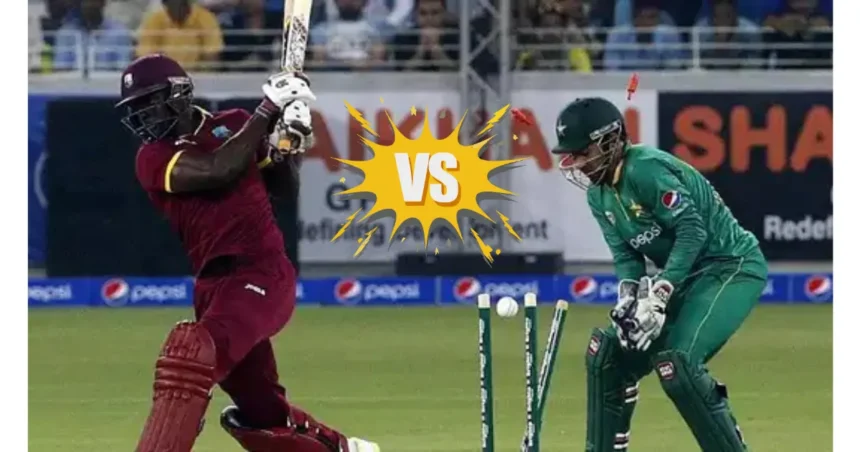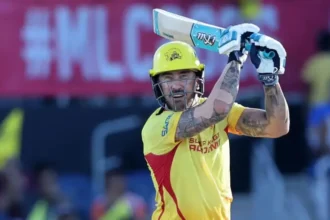Cricket fans don’t just want the result—they want the story. A good scorecard tells you who took charge in the powerplay, how the chase twisted late, and which over cracked the game open. If you’re looking for a pakistan national cricket team vs west indies cricket team match scorecard, this guide shows you exactly where to find a reliable one, how to read it like a pro, and what it reveals (and hides) about the match. We’ll also walk through a realistic sample layout so you can decode every line without breaking a sweat.
What You’ll Get From This Guide
- The best places to find an authentic pakistan national cricket team vs west indies cricket team match scorecard (live and post‑match).
- How to read batting and bowling cards, match summaries, DLS notes, partnerships, and advanced snippets like control percentages.
- Format-specific tips for Tests, ODIs, and T20Is (because each format lays out information differently).
- A quick rivalry snapshot to give context to what you’re seeing.
- A sample scorecard template and a walkthrough to practice on your own.
Where to Find a Trusted Scorecard (and Why It Matters)
When you search for a pakistan national cricket team vs west indies cricket team match scorecard, you’ll see plenty of links. Not all scorecards are equal. Look for sources that provide live ball‑by‑ball, verified player info, and complete post‑match stats (fall of wickets, Manhattan graphs, and wagon wheels if available).
Also popular (media):
- ESPNcricinfo — Known for detailed scorecards, ball‑by‑ball commentary, wagon wheels, and deep stats. (If you prefer a media outlet, this is a strong choice.)
Pro tip: Bookmark the relevant match page or the tournament series page. Scorecards are easiest to find via the series hub (e.g., “West Indies tour of Pakistan” or “Pakistan tour of West Indies”), where each match links to its own scorecard and commentary.
The Anatomy of a Cricket Scorecard
A complete scorecard is a compact story, with roles for every player and turning points stamped in numbers. Here’s what each part means when you’re scanning a pakistan national cricket team vs west indies cricket team match scorecard.
1) Header & Essentials
- Teams & Format: Pakistan vs West Indies — Test, ODI, or T20I.
- Venue & Date: Stadium and city matter; some grounds assist pace (e.g., Kingston), others might be slower (e.g., spin-friendly surfaces).
- Toss & Decision: “West Indies won the toss and chose to bat.” Toss choices hint at conditions and strategy.
- Result: “Pakistan won by 5 wickets,” “West Indies won by 18 runs,” “Match tied,” or “No result” (weather).
- Player of the Match: Useful for identifying the day’s game-changer.
2) Batting Card (Per Innings)
For each batter:
- Runs (R), Balls (B), Fours (4s), Sixes (6s), Strike Rate (SR).
- Dismissal method & bowler: c/b denotes caught/bowled combinations, lbw, run out, stumped, etc.
- Batting position: Openers vs middle-order context matters; a 40 (60) in a low-scoring thriller can be match-defining.
Things to read between lines:
- Starts vs conversion: Many 20–35s might imply good bowling in the middle overs or soft dismissals.
- Boundary pattern: High 4s/6s suggests dominance; a low boundary count with decent strike rate can signal sharp running between wickets.
- Clutch knocks: Late cameos (e.g., 24 off 10) during the death overs change equations rapidly.
3) Bowling Figures
For each bowler:
- Overs (O), Maidens (M), Runs (R), Wickets (W), Economy (Econ).
- Phase usage: Who bowled the new ball, middle overs, or the death?
- Control & variations (commentary-dependent): Short of length, cutters, yorkers, or spin variations.
What to notice:
- Dot-ball pressure: Maidens and low economy at critical stages win games.
- Strike bowler vs holding bowler: A 3/55 off 10 (strike) vs 0/28 off 10 (control) — both can be equally valuable.
4) Innings Summary & Extras
- Total and wickets: e.g., 268/8 (50 overs).
- Extras: Byes (b), leg-byes (lb), wides (w), no-balls (nb), penalty runs.
- Run Rate (RR) & Required RR (in chases).
- Powerplays: Overs and runs scored — especially vital in ODIs and T20Is.
5) Fall of Wickets (FoW) & Partnerships
- FoW: “72-1 (10.3 ov), 95-2 (15.1 ov)…” shows collapses or stabilizing periods.
- Partnerships: The backbone of any chase or recovery. A 110-run stand for the 4th wicket usually defines momentum.
6) DLS (Duckworth–Lewis–Stern) Notes (Limited-Overs)
If rain intervenes:
- Par scores and revised targets are documented.
- Scorecards flag DLS phases; look at when interruptions occurred and how targets shifted.
7) Fielding Highlights
- Catches, run-outs, stumpings — often summarized at the bottom or visible via commentary.
A razor-sharp run-out or a low catch at extra cover often flips a chase.
Format-Specific Tips
Tests: Two Innings, Many Inflection Points
- Two innings per side: The scoreboard will show a 1st and 2nd innings for both Pakistan and West Indies.
- Match situation evolves: A modest 1st-innings lead can become decisive with fourth-innings pressure.
- Strike rates matter less; time and wickets matter more.
- Bowling loads: Overs bowled across days indicate workload and captaincy trust.
- Pitch narrative: Spinners coming earlier in the second innings suggests turn; heavy use of reverse swing late on abrasive surfaces can appear in wicket clusters.
ODIs: Resource Management Is Everything
- 50 overs per side: Watch the powerplay (1–10), the middle (11–40), and death (41–50).
- Net run rate and small phases: A 10-ball lull often equals a wicket’s worth in pressure.
- Batting depth: A #8 who can hit sixes can transform a par score into a match-winning total.
T20Is: Micro-Margins, Macro-Impact
- 20 overs per side: Every over is a mini-battle.
- Matchups: Left-arm pace to right-handers early, off-spin to left-handers in the powerplay — the card plus commentary will hint at these.
- Cameos rule: 14-ball 30s can outshine a sedate 40, depending on the context.
Rivalry Snapshot: Pakistan vs West Indies
While eras shift, a few themes often recur when Pakistan meet West Indies:
- Pace and fire: Pakistan traditionally fields high-skill pace (think new-ball swing or late reverse), while West Indies bring bounce and hit-the-deck quicks.
- Batting personalities: Pakistan’s top order can blend classical strokeplay with accumulators; West Indies often feature explosive hitters and an adaptable middle order.
- Conditions dictate: In Karachi, Lahore, or Multan, spin and skiddy pace may feature; in the Caribbean (Kingston, Port of Spain, Providence), bounce and breeze test techniques differently.
- White-ball swagger: In ODIs and T20Is, power hitting and death-overs execution often decide tight finishes.
A pakistan national cricket team vs west indies cricket team match scorecard often mirrors these dynamics: clusters of wickets in helpful conditions, periods of consolidation, and then bursts of acceleration.
How to Read a Scorecard Like a Pro (Step-by-Step)
Let’s say you’ve opened a pakistan national cricket team vs west indies cricket team match scorecard. Here’s how to decode it quickly.
- Skim the header. Note the format, toss, venue, and result. If there’s rain, check for DLS.
- Identify the innings narrative. Who batted first? Was 260 a par score at this venue?
- Scan the powerplay. Did Pakistan/West Indies lose early wickets? A 55/0 start vs 29/3 paints very different pictures.
- Find the middle-overs engine. Look for the partnerships that bridged the innings.
- Check the finish. Death-overs runs conceded/scored decide ODIs and T20Is.
- Bowling balance. Economy vs wickets: who controlled the game, who broke it open?
- FoW timing. Collapses around strategic timeouts or just after breaks are classic turning points.
- Cross-check the commentary (if available). It adds context: dropped catches, misfields, near LBWs, tactical field changes.
A Practical Walkthrough (Using a Realistic Template)
Below is a simplified, representative layout you might see in any international scorecard. Use it to practice reading quickly.
Match: Pakistan vs West Indies — ODI
Venue: (Example) National Stadium, Karachi
Toss: West Indies won the toss and elected to field
Result: Pakistan won by 5 wickets (example outcome)
Player of the Match: (Example) Batter A for a match-winning 92 (101)
Pakistan Innings
- Batter A — 92 (101), 8×4, 1×6, SR 91.08 — c mid-wicket b Bowler X
- Batter B — 6 (15) — lbw b Bowler Y
- Batter C — 48 (58), 5×4 — run out (direct hit)
- Batter D — 37 (42), 2×4, 1×6
- Batter E — 21 (18), 1×4, 1×6
- Batter F — 13* (12)
Extras: 14 (w 8, nb 1, lb 5)
Total: 232/5 in 47.2 overs
Powerplays: 1–10 overs: 48/1; 11–40 overs: 130/3; 41–50 overs: 54/1
West Indies Bowling
Bowler X — 10-0-45-2
Bowler Y — 9-0-47-1
Bowler Z — 8-0-41-0
Spinner A — 10-1-38-1
Spinner B — 6.2-0-21-0
West Indies Innings
- Batter G — 71 (84), 7×4
- Batter H — 12 (19)
- Batter I — 33 (41)
- Batter J — 27 (36)
- Batter K — 14 (10)
- Batter L — 9* (7)
Extras: 16 (w 10, lb 6)
Total: 231/8 in 50 overs
Pakistan Bowling
Paceman 1 — 10-1-39-2
Paceman 2 — 10-0-44-1
Paceman 3 — 8-0-42-1
Spinner 1 — 10-0-45-2
Spinner 2 — 10-0-33-1
Fall of Wickets (WI): 60-1, 98-2, 132-3, 165-4, 189-5, 205-6, 220-7, 231-8
Partnerships (Key): 1st wicket 60 (Solid), 4th wicket 33 (Slow), late-overs stall
How to read this:
- Chase pressure: A target near 230 was par-ish; WI’s slow middle overs (132 to 165) likely set up a below-par finish.
- Death overs: Pakistan conceded only 46 runs in the last 10, with wickets — a winning pattern.
- Anchor vs finisher: Batter G anchored; lack of a late finisher hurt WI. Pakistan’s Batter A played the decisive knock, supported by calm rotation from D and F.
This is the sort of quick, context-rich read you can apply to any pakistan national cricket team vs west indies cricket team match scorecard you open.
Advanced Nuggets to Watch For
- Manhattan & Worm Graphs: Quick visuals of runs per over and the pace of the chase. A late overs surge vs steady accumulation shows up instantly.
- Wagon Wheels: Where did the boundaries come from? If a batter’s wagon wheel shows heavy mid-wicket scoring, bowlers likely missed fuller lengths or strayed straight.
- Phase-wise fielding: Dropped chances, misfields, and run-out opportunities often explain otherwise “mysterious” shortfalls.
- Matchups: Left-arm pace vs right-hand top orders; leg-spin to aggressive hitters; off-spin to lefties in the powerplay.
- Control % (if shown): Indicates how often a batter was in control of shots — great for judging fortune vs mastery.
Common Situations You’ll See in This Fixture
- Subcontinental venues: Pakistan’s spinners and skiddy quicks can squeeze middle overs. Expect lower dot-ball tolerance; singles matter.
- Caribbean venues: Extra bounce and breeze assist seam. Top orders tested early; new-ball spells set the tone.
- Neutral venues: Surface dictates everything. Always peek at the first 5 overs each innings to sense the pitch.
- Rain interruptions: DLS shifts targets. Read the revised overs and par-score notes before judging the chase.
Quick FAQs
Where can I see a live pakistan national cricket team vs west indies cricket team match scorecard?
Use the ICC Match Centre (official) for live scores and the full, verified scorecard:
How often is a scorecard updated?
For live matches, every ball; post-match, it remains available with final stats, usually alongside series pages and player stats.
What’s the difference between the scorecard and the commentary?
The scorecard is the structured summary (numbers and dismissals). Commentary adds ball-by-ball context—ideal for understanding momentum swings.
Do scorecards include DLS details?
Yes—limited-overs scorecards flag revised targets, overs remaining, and par scores if rain affected the match.
Are neutral-venue matches listed differently?
No—venue and country are shown in the header, but the structure of the scorecard is identical.
Checklist for Reading Any Scorecard Fast
- Header: format, toss, venue, result
- Powerplay outcome and early wickets
- Middle-overs partnerships and dot-ball pressure
- Death-overs surge or stall
- Bowling split: strike vs control
- FoW and partnership spikes
- Any DLS revisions
- Cross-check commentary for texture (dropped catches, injury, tactical shifts)
Tape that to your mental whiteboard, and you’ll read a pakistan national cricket team vs west indies cricket team match scorecard in under a minute—without missing the plot.
Putting It All Together
The next time Pakistan and West Indies face off, don’t just glance at the total and move on. Ask: Who owned the new ball? Which partnership broke the game’s back? Did the death overs go 40+ or get squeezed under 30? A well-built scorecard answers these questions in plain numbers. Combine it with a quick look at the commentary and the powerplay splits, and you’ll have the full narrative—no broadcast required.
Final Word
Whether you’re re-living a classic or following today’s action ball-by-ball, a pakistan national cricket team vs west indies cricket team match scorecard is your most reliable, compact recap of what mattered. Once you know what to look for—powerplay tone, middle-overs control, death-overs efficiency, and key partnerships—you’ll start seeing the whole match unfold from a single page.






